Whether silk embroidery floss bleeds is pivotal for artisans and crafters seeking to preserve the beauty of their stitched creations.
The allure of silk lies in its lustrous appearance, smooth texture, and historical significance in embroidery. However, the risk of bleeding poses a potential challenge.
This inquiry delves into the factors contributing to silk floss bleeding, encompassing issues like unset dyes during manufacturing, water sensitivity, and washing practices.
Understanding these elements is essential for implementing preventative measures. As we explore the nuances of this concern, we unravel the delicate balance between harnessing silk’s exquisite qualities and safeguarding against potential color bleeding in embroidery.
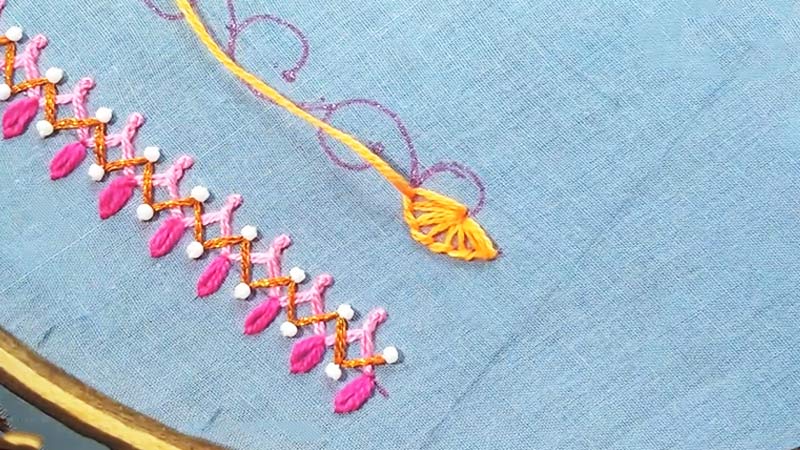
Does Silk Embroidery Floss Bleed? 5 Reasons
Yes, silk embroidery floss can bleed under certain conditions. The bleeding of silk embroidery floss occurs when the dye used to color the threads is not set correctly or when the floss comes into contact with moisture.
Here are some reasons why silk embroidery floss may bleed:
1. Unset Dye
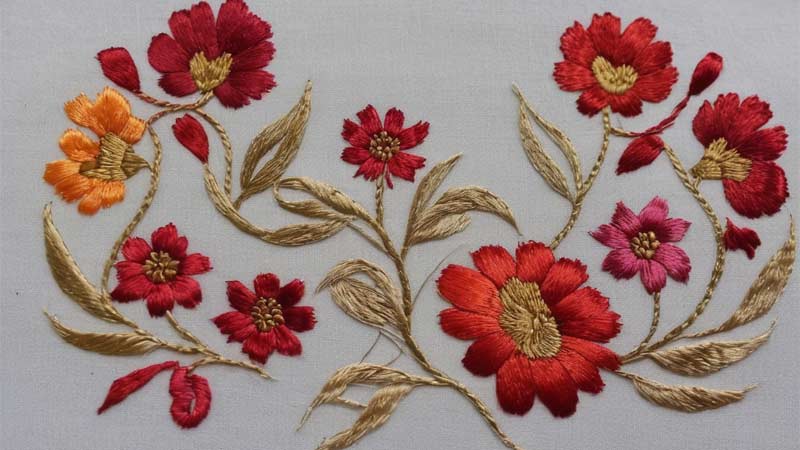
The unset dye issue primarily arises during the manufacturing process of silk embroidery floss. If the dye is not adequately fixed to the silk threads, it remains unstable and prone to bleeding when exposed to moisture.
Manufacturers employ various dye-setting techniques, including heat treatment and chemical bonding, to ensure the dye adheres firmly to the fibers.
When this step is skipped or not executed properly, silk floss can easily bleed, especially when confronted with water or damp conditions.
2. Water Exposure
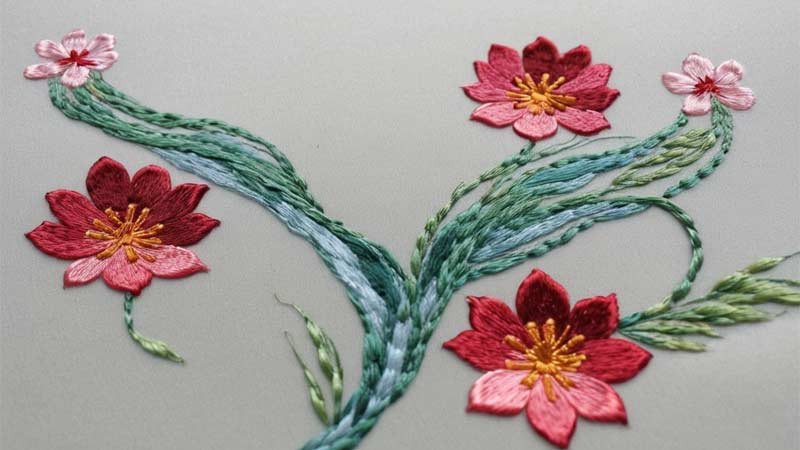
Silk embroidery floss exhibits a high sensitivity to water. Excessive moisture, whether in the form of rain, spilled liquids, or high humidity, poses a significant risk of causing the dye to bleed.
When the stitched piece comes into contact with water or is exposed to a humid environment, the dye molecules may disperse, leading to the undesirable running of colors.
Artists and crafters must exercise caution when working with silk embroidery in damp conditions, taking preventive measures to shield their projects from water exposure to maintain the vibrancy of the threads.
3. High Temperature
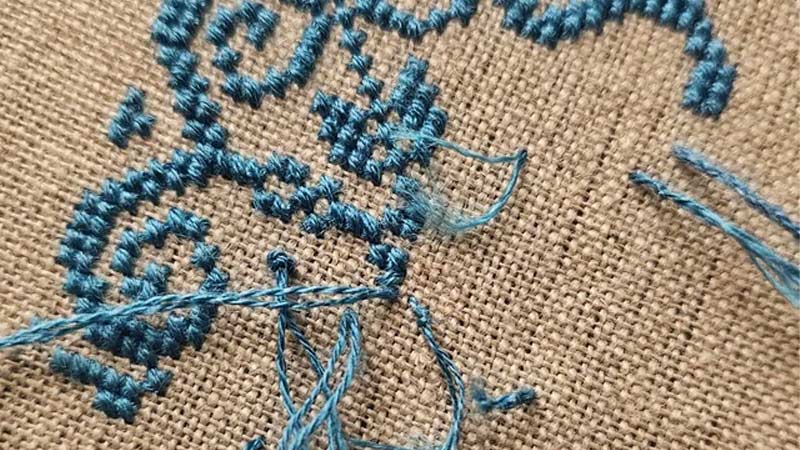
Heat serves as another factor contributing to the bleeding of silk embroidery floss. Exposure to high temperatures, as may occur during ironing or other heat-related processes, can activate the dye molecules.
Once activated, the dye becomes mobile, making it more likely to bleed onto adjacent threads or fabric.
Crafters should be mindful of temperature conditions during the creation and care of silk embroidery projects, adopting techniques that minimize exposure to excessive heat and safeguard the integrity of the dyed threads.
4. Poor Quality Dye
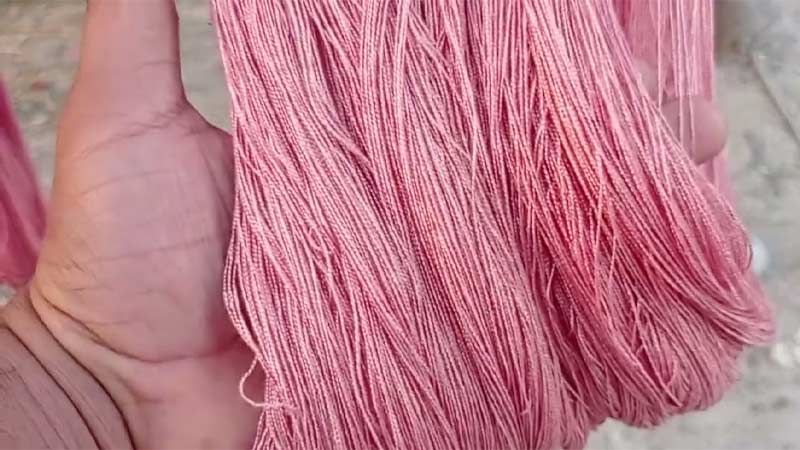
The quality of the dye utilized in manufacturing silk embroidery floss plays a pivotal role in preventing bleeding.
Low-quality or cheap dyes may lack the chemical properties to adhere effectively to the silk fibers. As a result, these dyes are more susceptible to bleeding when exposed to moisture.
To ensure colorfastness and durability, manufacturers must invest in high-quality dyes that form a stable bond with the silk threads, reducing the risk of bleeding and maintaining the overall quality of the embroidery floss.
5. Improper Washing
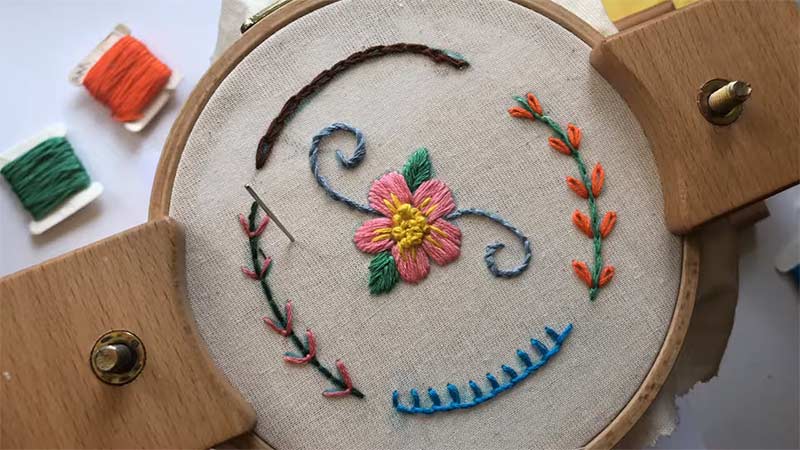
Improper washing practices pose a significant risk to the color stability of silk embroidery projects.
If stitched pieces are not pre-treated or if they undergo washing with harsh detergents or in hot water, the dye may bleed.
Pre-treating the silk embroidery floss with color fixatives or vinegar solutions can aid in setting the dye before the project is washed.
Additionally, hand washing with mild soap and cold water is recommended to minimize the risk of bleeding, ensuring that the vibrant colors of the silk threads remain intact throughout the life of the embroidery.
Is Silk Thread Good for Embroidery?
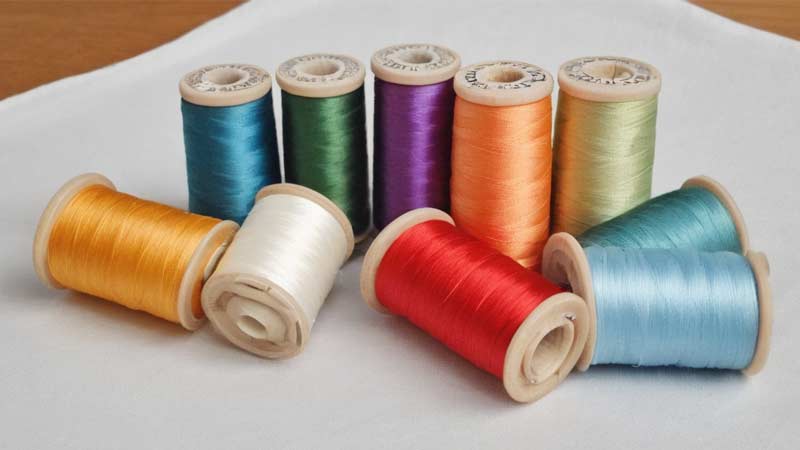
Yes, silk thread is highly regarded and considered an excellent choice for embroidery for several reasons:
Lustrous Appearance
The natural sheen and luster of silk thread are unparalleled in the world of embroidery, elevating the visual appeal of projects to new heights.
The luxurious and elegant touch silk imparts to embroidery is due to its inherent reflective quality.
Light interacting with silk fibers creates a subtle glow that enhances the overall sophistication of embroidered designs.
This radiant quality makes silk ideal for those aiming to achieve intricate and high-quality pieces, adding a touch of luxury to the finished work.
Smooth Texture
Silk threads’ exceptionally smooth texture sets them apart in embroidery materials.
This inherent smoothness allows silk threads to glide through the fabric effortlessly, facilitating seamless stitching.
The fine texture of silk is particularly well-suited for delicate and detailed embroidery work, ensuring that stitches are not only even but also precise.
This attribute makes silk a favorite among artisans who prioritize precision in their embroidery, enabling them to create intricate details with ease and finesse.
Variety of Colors
Silk threads offer a vast and vibrant color palette, making them preferred for embroiderers seeking creative flexibility. The dyeing process for silk is highly effective, resulting in vivid and long-lasting colors.
This extensive array of colors empowers embroiderers to bring their creative visions to life, allowing for intricate color combinations and shading in embroidery projects.
The richness and depth of the silk colors contribute to the embroidered artwork’s overall visual impact.
Durability
Despite its delicate and refined appearance, silk thread is surprisingly robust and durable. Its strength allows it to withstand the tension exerted during the embroidery process without easily breaking.
This durability ensures that the finished embroidery remains intact over time, making silk a reliable choice for decorative and functional applications.
Whether adorning garments or decorative pieces, silk-threaded embroidery maintains its structural integrity, standing the test of time.
Natural Fiber
Silk, derived from the silkworm’s cocoon, is a natural fiber with intrinsic appeal for those who prioritize sustainability in their crafting endeavors. Being biodegradable and eco-friendly, silk aligns with environmentally conscious practices.
Crafters who choose silk thread benefit from its luxurious qualities and contribute to reducing their ecological footprint, making it a conscientious choice for those seeking harmony between craftsmanship and environmental responsibility.
Breathability
Silk’s renowned breathability is valuable for embroidery projects, particularly those involving clothing and accessories.
The natural properties of silk allow air to circulate through the fabric, enhancing comfort and wearability.
This breathability is especially advantageous when embroidering on fabrics that will be in direct contact with the skin, ensuring that the finished pieces are visually pleasing and comfortable to wear.
Historical Significance
Silk holds a venerable place in the historical tapestry of textiles and embroidery. Silk has been a coveted material in traditional embroidery techniques for centuries, contributing to the cultural and historical significance of silk-threaded embroidery.
Many traditional embroidery styles and patterns are intricately designed for use with silk thread, preserving the heritage of this art form.
Silk in embroidery connects contemporary artisans with a rich legacy, adding a layer of cultural depth and authenticity to their craft.
How to Keep Silk Embroidery Floss From Bleeding?
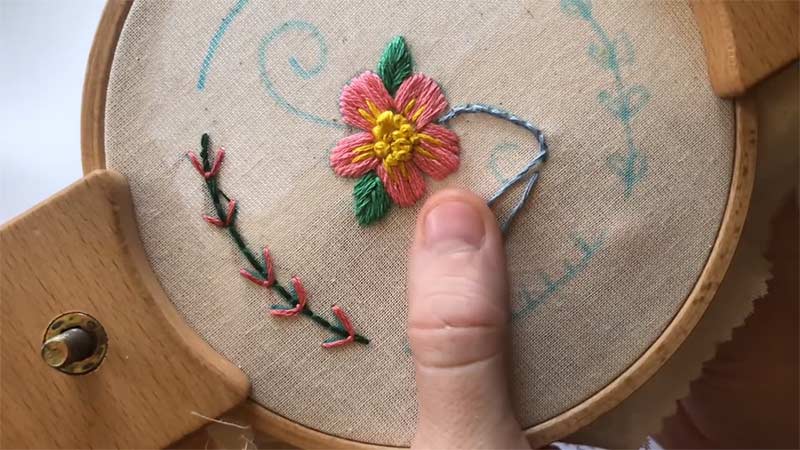
Preserving the vibrant colors of silk embroidery floss and preventing bleeding is essential for maintaining the integrity of your stitched projects.
Here are steps on how to prevent silk embroidery floss from bleeding so your silk embroidery floss remains colorfast:
Test for Colorfastness
Before diving into your embroidery project, conduct a colorfastness test on a small section of the silk embroidery floss.
Dampen the floss and press it against a white cloth, observing for any signs of dye transfer. If bleeding occurs, consider pre-treating the entire floss to minimize the risk of color bleeding during embroidery.
Pre-Treat the Floss
To enhance colorfastness, pre-treat the silk embroidery floss before starting your project. Use a color fixative or a vinegar solution, following the instructions provided with the product.
This pre-treatment helps to set the dye, reducing the likelihood of bleeding when the floss comes into contact with moisture during embroidery.
Use Cold Water
When washing your finished silk-embroidered project, opt for cold water instead of hot water. Cold water is gentler on the fibers and less likely to trigger dye bleeding.
This precaution is essential for preserving the vibrancy of the colors in your embroidery, as hot water can cause the dye to release and bleed.
Avoid Harsh Detergents
Choose mild, pH-neutral soaps specifically formulated for delicate fabrics when washing silk embroidery.
Harsh detergents can strip away the dye and contribute to bleeding. Steer clear of bleach and strong chemicals that may compromise the stability of the dye and impact the overall colorfastness.
Hand Wash Carefully
When washing embroidered items, handle them with care to avoid stressing the delicate silk fibers.
Gently agitate the water and refrain from rubbing or wringing out the fabric, as these actions can contribute to dye bleeding. Thoroughly rinse the items to remove any soap residue that could affect the colors.
Separate Colors
If your embroidery project involves multiple colors, consider washing each color separately to prevent bleeding between different hues.
Alternatively, use color catchers in the wash to absorb any potential bleeding and protect the vibrancy of each color. This precaution is particularly crucial for intricate designs with diverse color palettes.
Air Dry
After washing, air drying is the preferred method for silk-embroidered pieces. Avoid using high heat or exposing the items to direct sunlight during drying, as excessive heat can activate the dye and increase the risk of bleeding.
Lay the embroidered items flat on a clean, absorbent surface to maintain their shape as they dry.
Store Properly
When storing silk-embroidered projects, choose an excellent, dry location away from direct sunlight. Prolonged exposure to sunlight can lead to fading over time.
For added protection, store embroidered items flat rather than hanging them to prevent stress on the threads, helping to maintain the integrity of the embroidery.
Consider Professional Cleaning
When your silk-embroidered item is particularly delicate, valuable, or intricate, consider entrusting it to professional dry cleaners.
Professional cleaners have the expertise to handle delicate fabrics and intricate embroidery, minimizing the risk of bleeding and ensuring proper care for your cherished pieces.
Communicate the delicate nature of the silk and embroidery to the cleaners to ensure appropriate treatment.
FAQs
Can You Wash Silk Embroidery Thread?
Yes, you can wash silk embroidery thread. However, taking proper precautions is essential to prevent bleeding and damage to the silk fibers.
Does silk embroidery floss always bleed?
No, silk embroidery floss doesn’t always bleed. Whether it bleeds or not depends on factors such as the dye-setting process during manufacturing, exposure to moisture, and the quality of the dye used.
Is water exposure the leading cause of bleeding in silk embroidery floss?
Water exposure is a significant factor, but bleeding can also result from unset dye during manufacturing, exposure to high temperatures, poor-quality dye, and improper washing practices.
Wrap Up
The potential for silk embroidery floss to bleed underscores the importance of mindful handling and proper care.
Whether stemming from unset dyes during manufacturing, water exposure, or washing practices, the risk of bleeding necessitates proactive measures.
Pre-treating the floss, testing for colorfastness, using cold water, and avoiding harsh detergents are crucial steps to preserve the vibrancy of silk threads.
Despite this vulnerability, the allure of silk’s lustrous appearance, smooth texture, and historical significance in embroidery make it a prized choice.
With meticulous attention to prevention and care, artisans can continue to harness the beauty and sophistication that silk embroidery floss brings to their creative endeavors.
Leave a Reply